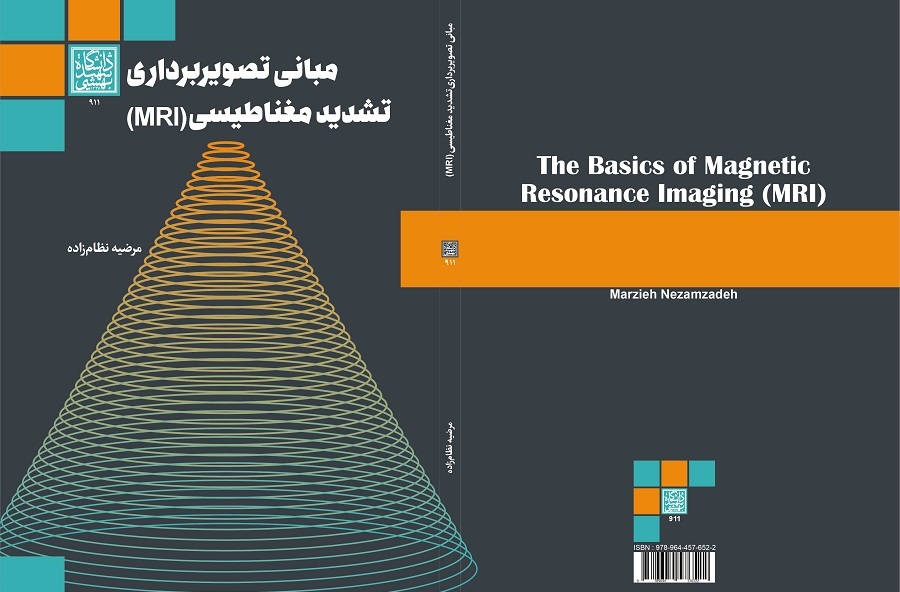
The Basics of Magnetic Resonance Imaging (MRI) Authored by Dr. Marzieh Nezamzadeh, Faculty Member at the State University of New York Published for the first time in 2025, Basics of Magnetic Resonance Imaging (MRI) by Dr. Marzieh Nezamzadeh spans 204 pages in standard size and is priced at 1,850,000 IRR.
Magnetic Resonance Imaging (MRI) is a relatively non-invasive diagnostic method based on the magnetic excitation of hydrogen nuclei in biological tissues—remarkably, without the use of ionizing radiation. With its ability to produce three-dimensional images, a wide range of views, various cross-sections, and diverse contrast levels, MRI is recognized today as one of the most advanced imaging modalities for soft tissues. Particularly in the diagnosis and follow-up of brain disorders and lesions, it stands superior to other diagnostic methods in medical imaging.
This book provides valuable content for students in physics, medical physics, and biomedical engineering, while also serving as a useful resource for imaging science learners seeking to grasp the theoretical foundations of MRI.
The author’s objective in presenting the physics principles of MRI in this work is to explore its basis in mathematics, physics, and signal processing—while paying tribute to the pioneers and founders of modern imaging science.
The book is structured as follows:
Chapter One (Introduction) outlines the history of MRI in medical imaging, its remarkable applications, advantages, and also its limitations compared to other imaging methods.
Chapter Two explains the fundamentals of nuclear magnetic resonance by defining spin, examining its quantum properties, and analyzing spin distribution in a magnetic field based on Boltzmann thermal distribution, leading to the concept of the magnetization vector.
Chapter Three discusses the generation of MRI signals, magnetic relaxation processes, recovery of magnetization, and introduces the Bloch equations along with their analysis.
Chapter Four covers the detection of MRI signals and elaborates on spin echo signals. It introduces how magnetic field gradients are used for slice selection and for frequency and phase encoding of spin positions, discusses image formation in k-space, and explores various k-space sampling techniques for image reconstruction.
Chapter Five analyzes signal formation in relation to RF pulse sequences and magnetic field gradients. This chapter also presents different pulse sequences and examines fast imaging techniques that influence scan times.
Chapter Six focuses on key parameters affecting MRI image quality—such as signal-to-noise ratio, spatial resolution, and image contrast. It also addresses various artifacts and provides methods for reducing or eliminating them.
Chapter Seven introduces the hardware components of MRI systems.
Chapter Eight (Final Chapter) reviews MRI safety considerations, permissible exposure limits, and preventive measures against potential hazards. Each chapter concludes with a brief summary, followed by descriptive, analytical, and applied questions designed to reinforce key points and challenge readers' understanding. Recommended references and useful appendices are also provided for further study.
Students and interested readers may purchase the book at the Publications Sales Office of Shahid Beheshti University, located on the ground floor of the Information Technology (IT) Building. Online orders can also be placed via the Center for Academic Publications website. Additionally, the e-book is available on Fidibo and Taghche platforms.

